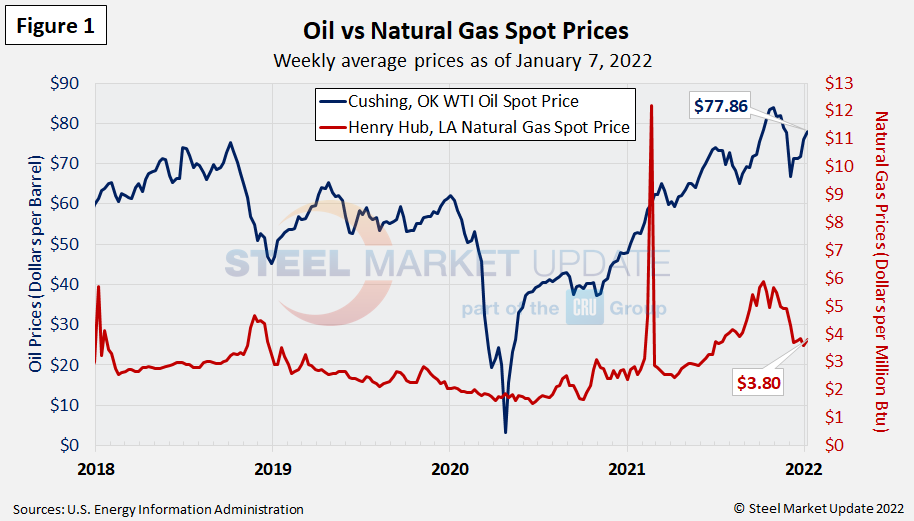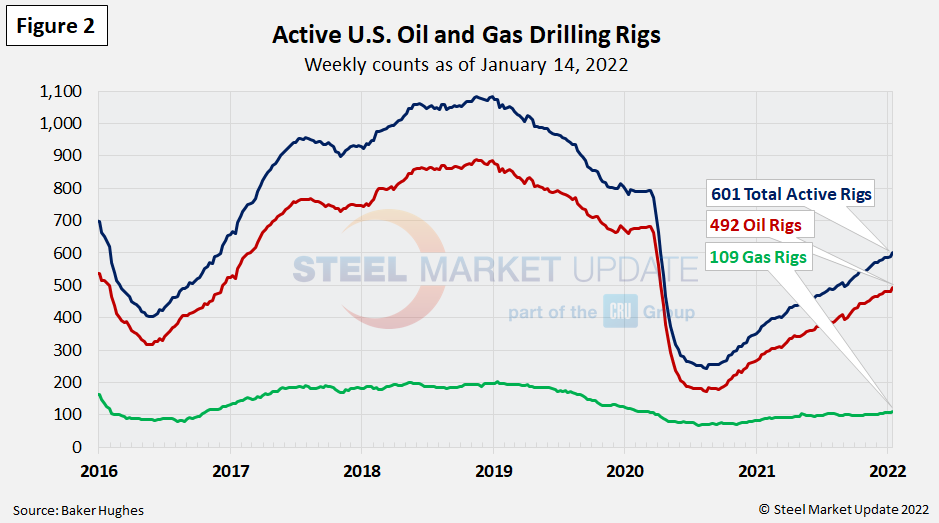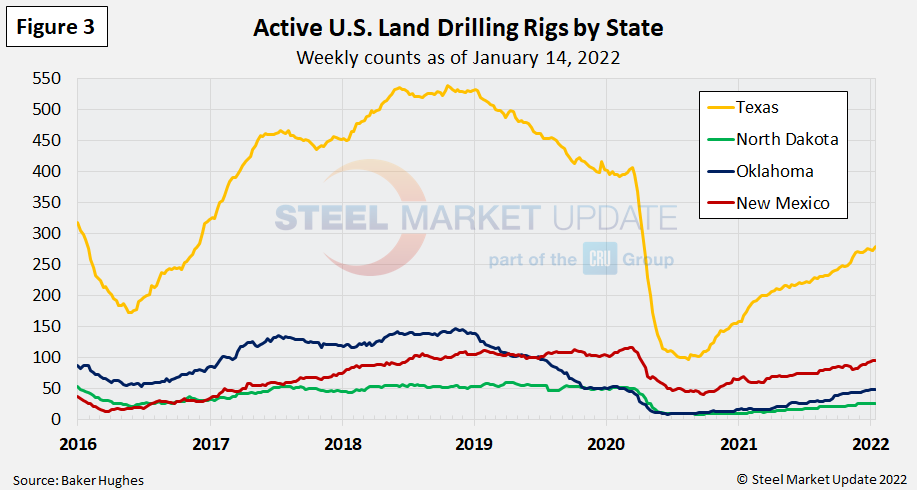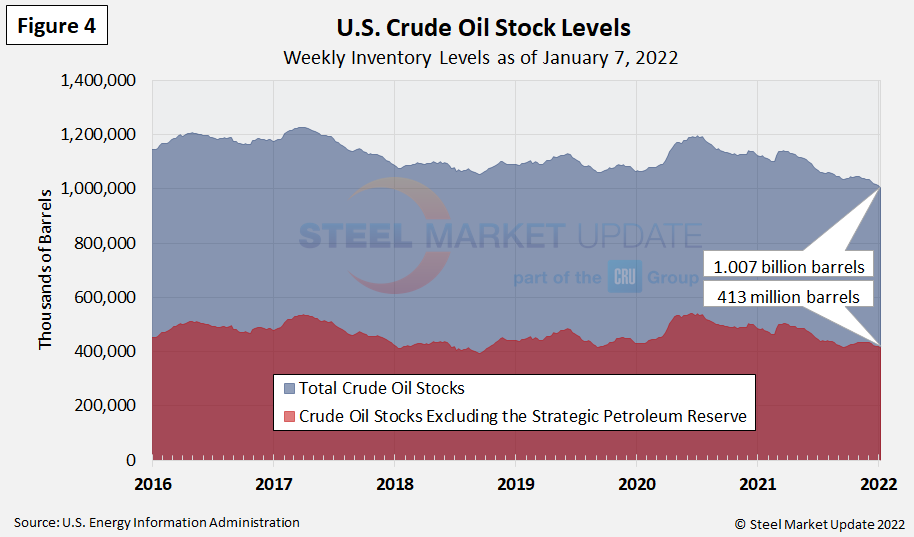Environment and Energy

Energy Market Analysis through January
Written by Brett Linton
January 17, 2022
The Energy Information Administration’s January Short-Term Energy Outlook (STEO) continues to reflect high levels of uncertainty for future global energy consumption due to the ongoing pandemic recovery, impact of the Omicron variant, and unpredictable winter weather. EIA forecasts oil prices to remain near current levels throughout 2022, while natural gas prices could experience volatility as winter temperatures drive demand and prices.
Spot Prices
The spot market price for West Texas Intermediate (WTI) was at $77.86 per barrel as of Jan. 7. Recall that 10 weeks prior, the spot price reached $83.84 per barrel, the highest weekly price since October 2014 when it hit $87.63. Natural gas prices continue to decline from recent highs, now at $3.80 per MMBTU (million British Thermal Units) as of Jan. 7. In early October, natural gas spot prices reached a 7.5-year high, peaking at $5.87 per MMBTU (we are excluding the high spot-prices seen in February 2021 due to winter storms and supply scarcity). Figure 1 shows the weekly average spot prices for each product. The EIA now expects crude oil spot prices to average $75 per barrel for 2022 and $68 per barrel in 2023. Natural gas spot prices are expected to average $3.79 per MMBtu for 2022 and $3.63 per MMBtu for 2023.

Rig Counts
The number of active U.S. oil and gas drill rigs continues to slowly recover from the mid-2020 low. The latest count was 601 active drill rigs as of the end of last week, comprised of 492 oil rigs and 109 gas rigs, according to Baker Hughes (Figure 2). While up over recent months, active drill rigs are still down 30% from the 793 count in March 2020, just prior to the coronavirus shutdowns. EIA expects rig counts to increase into 2022 as oil production rises in the U.S. The table below compares the current U.S., Canadian and international rig counts to historical levels.


U.S. oil and gas production are heavily concentrated in Texas, Oklahoma, North Dakota and New Mexico. As of Jan. 14, production is steadily increasing, but still down as much as 48% compared to pre-COVID levels. The most active state, Texas, now has 280 rigs in operation, the highest level seen since April 9, 2020. Recall that Texas rigs had plummeted 76% back in 2020, falling from 407 in March to 97 rigs in August (Figure 3).

Stock Levels
U.S. total crude oil stocks continued to fall from the July 2020 high, reaching a new multi-year low of 1.007 billion barrels as of Jan. 7. This time last year stocks were at 1.120 billion barrels (Figure 4).

Trends in energy prices and rig counts are a predictor of demand for oil country tubular goods (OCTG), line pipe and other steel products.
By Brett Linton, Brett@SteelMarketUpdate.com

Brett Linton
Read more from Brett LintonLatest in Environment and Energy

SunCoke Q1 earnings jump on cokemaking, logistics ops
SunCoke's earnings soared in the first quarter, with the company citing strong performances in its cokemaking and logistics segments.

GSCC: Steel decarbonizing for a more sustainable future
Steel is a foundation of the global economy. It is an essential raw material for nearly every industry, from automotive and construction to transportation, machinery, and energy.

DOE transformer rule to benefit Cliffs’ electrical steel
The US Department of Energy has finalized Congressionally mandated energy-efficiency standards for transformers.

SMA: US steelmakers deserve credit for leading decarbonization charge
When it comes to finding ways to reduce emissions in steel manufacturing, we are in the all-of-the-above camp.

AISI explains new PM2.5 air-quality regulation’s impact on steel
The US already had strict regulations on air-quality standards for particulate matter, but they are going to get even tighter.
